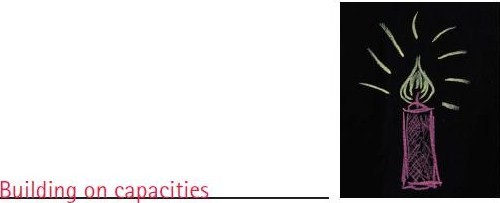Articles in the Mycoordinates Category

Europe is building its own global satellite navigation system, Galileo, which will offer very accurate positioning and timing, under civilian responsibility. This system will be compatible with the two other existing systems, GPS and GLONASS. A user will be able to use the same receiver to calculate his position from signals sent out by any satellites combination, however Galileo will offer to all users a bi frequency system that will allow knowing position within one meter of accuracy, which is unprecedented for an openly accessible service. Apart from extreme circumstances, it will always be available and its users will be informed in a few seconds of a potential disruption of one of the satellites. Thus it will be usable for safety of life applications, requiring the highest security level, such as plane landing, train circulation or car guidance.

Nano effects
A historic moment.
For the automobile industry and for India too.
Tata unveiled small car Nano with a price tag of US$ 2,500.
When this ‘car for masses’ was promised, many did not believe.
Now it is a reality.
A revolutionary innovation.
An innovation that may change the life of millions.
GNSS technology too has this potential.
For imaginative applications and wider …

The LBS stream
It’s integral to the day-to-day functioning in the developed world.
In Asia, Japan and Korea lead the way.
The undercurrents are becoming visible in India.
First, it was the state-owned BSNL to join the LBS bandwagon.
Later, the private player Bharti Airtel followed suit.
Market dynamics indicate positive trends for LBS.
With the mobile phones holding the pulse of …
Last month, New York witnessed cab drivers’ strike.
A protest against a city rule that cabs be equipped with GPS.
Popular contention among others is that GPS is overly intrusive.
It might be possible that such protests are driven by vested interests.
Nonetheless, the privacy issues cannot be ignored.
Many feel that technology is spilling into the zone of …

It is not just having computers in offices or creating websites, but it involves the creation of systems; integrating technology with administrative processes; human resources and dispensing information and services faster to the citizens. e-Governance offers a number of advantages for the government as well as the public. It shifts the centre of power from human agencies to technology, which is easier to deal with. For example, if a citizen wants some information on building codes, he/she has to go to the office of the local authority to get it, often shuttling from one table to another. If such information is made available on websites, it makes things easier for the citizens as well as the authorities.
It is not simply a project.
It is an ambition.
An assertion of technology.
And taking the technology beyond the realms of monopoly.
There are hurdles. Political and economical.
But stronger is the will to overcome them.
There are confl icts. On approach and interest.
There are frustrations on the delay. And, at stake is the credibility.
Still, there is a resolute to …
India celebrates 60 years of independence.
We are happy once again.
A celebration for democracy and democratic values.
On the occasion, we take a look at two movements.
National Spatial Data Infrastructure and Sustainable …

LAND forms important part of development activity. Land revenue is one of the sources of income for state governments. It may come from land holdings by private individuals, real estate transactions or other natural resources being tapped by various sections of the society. Hence, creation of a Land Information Management System involves
We published a circular by Central Board of Excise and Customs, Government of India that came out in April (Coordinates, May 2007).
The circular classifies high technology featured mobile phone including GPS as a secondary feature as mobile phone.
That implies four per cent custom duty rather than 34 per cent as applicable to …











 (5.00 out of 5)
(5.00 out of 5)